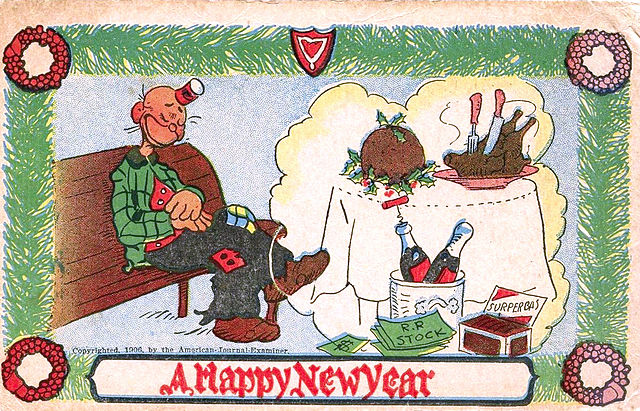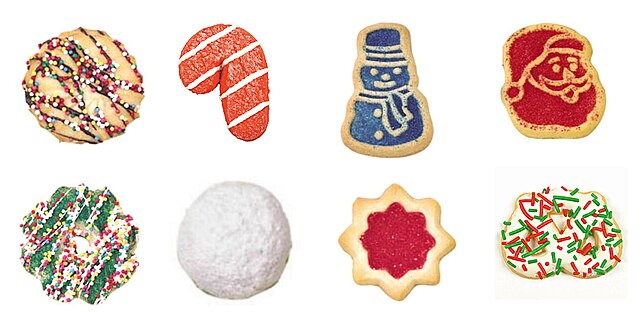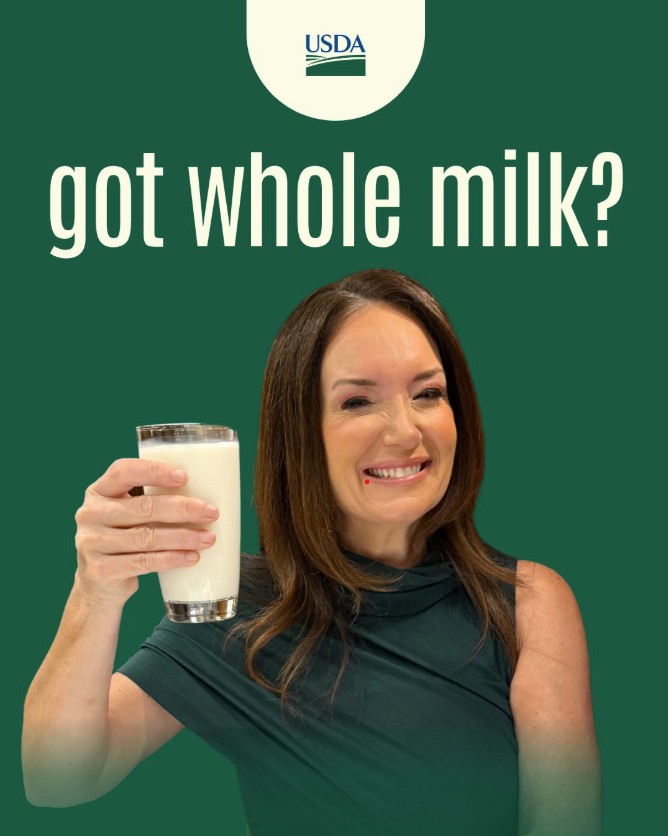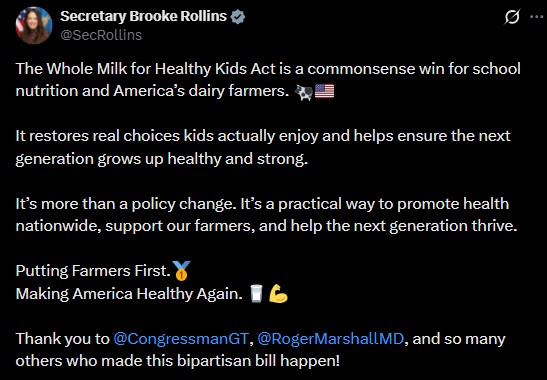Happy New Year!

Alert to readers: Amazon.com displays listings for several more workbooks, study guides, and cookbooks purportedly based on my book, What to Eat Now (see previous post on this). I did not write any of them. Caveat emptor!
___________________________
From FoodDive: How MAHA transformed the food industry in 2025: Lawmakers capitalized on anxieties around ultraprocessed ingredients to introduce new regulations, with companies choosing to reformulate or fight back.
To summarize:
The food industry’s response?
So far, most of what is happening in the food arena is either still in the promise stage, voluntary, and unlikely to have much health benefit (See: A MAHA Check-Up: Is The United States Getting Healthier?)
All of what is happening with food must be understood in the context of the devastating destruction of America’s public health and scientific research systems.
MAHA’s work is focused on the dietary choices of individuals.
Any individual who tries to make healthful dietary choices is up against a food system designed for profit, not public health.
Diet matters to health, but healthy diets are not enough to prevent measles.
We need functioning public health systems: CDC, FDA, NIH. We no longer have them.
Happy new year everyone. Let’s hope the new year brings us peace, kindness, and public health.
My new book, What to Eat Now: The Indispensible Guide to Good Food, How to Find It, and Why It Matters, came out a few weeks ago and I am stunned by how it is being AI-used by exploiters.
I’ve already written about the DeepFake books supposedly inspired by What to Eat Now, which I had nothing to do with. And I have been alerting readers to even more workbooks, study guides, and cookbooks.
Now I’m also having to deal with DeepFake book club offers.
Every week since the book was published, I get several incredibly flattering letters like these:
Hi Marion,
When I came across What to Eat Now: The Indispensable Guide to Good Food, How to Find It, and Why It Matters, I felt that spark you only get when a book arrives exactly when the world needs it most. In an era swirling with misinformation, techno-food innovations, and thirty-thousand-item supermarket aisles, your voice cuts through the noise with clarity, courage, and wit.
I’m Emily A., curator of The San Francisco “Not Quite a Book Club” a vibrant circle of 4,369 readers who don’t gather to simply discuss books, but to rethink the assumptions shaping our daily lives. We’re known for choosing titles that push conversations forward, and your thoroughly revised, deeply relevant guide does precisely that.
What struck me most about What to Eat Now is how seamlessly it blends field guide, exposé, and empowering manifesto. You don’t just tell people what to eat, you reveal the hidden architecture of our food system, the psychology of our choices, and the quiet politics influencing every item in our baskets. It’s the kind of work that wakes readers up, sparks debate, and shifts lifelong habits.
Our readers are drawn to books that matter, books that help them look at something ordinary with extraordinary new eyes. What to Eat Now is exactly that kind of catalyst…If this feels like a collaboration you’d enjoy, I’d be thrilled to walk you through the simple next steps.
Thank you for offering a clear, honest, and necessary compass in a world where so many feel lost in the grocery store.
Warm regards,
Wow! How could I possibly not jump at this opportunity to share my work with more than 4,000 readers.
Here’s one more to give you the idea of how this works:
Dear Marion Nestle,
I am honored to invite you to participate in our upcoming community virtual event, celebrating founding figures in food studies and authors who empower citizens to navigate the complex landscape of modern nutrition.
For over two decades, your work has served as the “clear-eyed” conscience of the American food system. Your latest release, What to Eat Now, arrives at a critical juncture. In an era of “techno foods,” corporate organics, and pervasive misinformation, our community is eager for the no-nonsense, aisle-by-aisle guidance that only you can provide.
We are particularly interested in hosting a discussion around the vital themes of your revised classic…Your reputation as America’s preeminent nutritionist makes you a highly anticipated guest for our audience. We would be privileged to provide a platform for you to share your wit and common sense with a community that values food not just as fuel, but as a pillar of community and ethics.
Please note that an organization fee applies to support the event’s planning and outreach.
Well, at least that’s disclosed.
And on and on such letters go, each more flattering than the last. And so many of them!
Fortunately, I’m supposed to be checking all offers with my publisher, Macmillan (Macmillan owns Farrar, Straus & Giroux, which owns North Point Press). That’s how I learned about The New “Book Club” Scam Targeting Authors and How to Spot It.
They claim unusually large membership numbers.Real book clubs typically have: 6–12 regulars (in person), or 20–50 active members (online). Claims of 500–5,000 active readers aren’t impossible, just unlikely.
They ask for money at some point.This is the core red flag. Legitimate book clubs do not charge authors to participate or be featured. Sometimes they even pay the author, if the event is big enough.
They resist sharing any verifiable details.A real organizer can: tell you where the group meets, provide a link to a group page, share photos or past events, name members, or offer references from other authors. A scammer cannot.
I’m as subject to flattery as anyone else is and I can’t help wanting to know: Is there actually a book club at the end of all this? I’m so tempted to pursue one of these and see.
Also, I’ve been collecting the DeepFake books with my name on the cover. I have eight (!) so far—workbooks, study guides, and cookbooks. I will report on them sometime in January.
In the meantime, caveat emptor!
Alert to readers: Amazon.com displays listings for several more workbooks, study guides, and cookbooks purportedly based on my book, What to Eat Now (see previous post on this). I did not write any of them. Caveat emptor!
___________________________
Thanks to Lais Miachon Silva of the Micronutrient Forum for sending this item.
The study: A Systematic Review of Nonsugar Sweeteners and Cancer Epidemiology Studies. Advances in Nutrition Volume 16, Issue 12, December 2025, 100527. https://doi.org/10.1016/j.advnut.2025.100527
Methods: systematic literature review
Results: “We found no consistent associations between any NSS or NSSs in aggregate and any cancer overall, and no evidence for dose–response.”
Conclusions: “Experimental animal and mechanistic evidence for NSSs does not support human-relevant carcinogenicity or any biologically plausible mechanisms by which NSSs could cause genotoxicity or cancer in humans. Overall, the epidemiology evidence does not support associations between any NSS and any cancer type.”
Funding: ABA [American Beverage Association] provided funding for this paper, which was written during the authors’ normal course of employment.
Conflict of interest: All authors are employed by Gradient, Geosyntec, or the American Beverage Association (ABA). Gradient and Geosyntec are environmental and risk sciences consulting firms. ABA is the trade association that represents America’s non-alcoholic beverage industry. ABA provided funding for this paper, which was written during the authors’ normal course of employment. This paper represents the professional opinions of the authors and not those of ABA.
Comment: This is a classic example of an industry-funded study conducted by industry employees producing results favorable to the sponsor’s commercial interests. I am particularly amused by the last conflict of interest statement. It too is a classic example, this time of Upton Sinclair’s famous quote: “It is difficult to get a man to understand something when his salary depends upon his not understanding it.”
Alert to readers: Amazon.com displays listings for several more workbooks, study guides, and cookbooks purportedly based on my book, What to Eat Now (see previous post on this). I did not write any of them. Caveat emptor!
___________________________
I’ve been collecting items on the effects of GLP-1 drugs on the food industry.
Recall my mantra: Eating less is bad for business.
These drugs are a threat to the food industry. Here’s how it is responding.
May your holidays be filled with family, friends, loving kindness—and cookies!

Alert to readers: Amazon.com displays listings for several more workbooks, study guides, and cookbooks purportedly based on my book, What to Eat Now (see previous post on this). I did not write any of them. Caveat emptor!
________________________

I can hardly get my head around this.
Here is USDA Secretary Brooke Rollins doing a version of the dairy industry’s milk mustache campaign celebrating the reintroduction of whole milk into schools.
Our otherwise dysfunctional Congress has managed to pass a bipartisan bill, “The Whole Milk for Healthy Kids Act of 2025.”
The bill overturns previous restrictions on whole-fat milk and dairy alternative milks in schools. Now:
I. Schools may offer students dairy milks—or nutritionally equivalent non-dairy beverages
- flavored (e.g., chocolate) and unflavored
- organic or nonorganic
- reduced fat, low-fat, and fat-free
- lactose-free
II. Milk fat will not count as saturated fat in rules about saturated fat limits
The Physicians Committee for Responsible Medicine is happy about the the non-dairy alternatives.
But this has to be counted as a clear win for the dairy industry, desperate to get whole and flavored milks back into schools.
The rationale?

How will doing this make kids healthier?
Here is my milk summary table from What to Eat Now.

And this is before the chocolate and sugar get tossed in.
How much difference will it make to kids’ overall calorie and saturated fat intake? My guess: probably not much.
Here are my immediate questions:
Note: all of these are about the selling of milk, not health.
That’s because this is not a health initiative; it is a dairy promotion initiative.
Alert to readers: Amazon.com displays listings for several more workbooks, study guides, and cookbooks purportedly based on my book, What to Eat Now (see previous post on this). I did not write any of them. Caveat emptor!
___________________________
As I keep saying, food companies are not social service or public health agencies. They are businesses with stockholders to please and pleasing stockholders is their first priority.
Even so, I am occasionally still shocked by business practices.
Here’s one: Same Product, Same Store, but on Instacart, Prices Might Differ
The shoppers were volunteers, participating in a study published on Tuesday and organized by the Groundwork Collaborative, a progressive policy group, and Consumer Reports, a nonprofit consumer publication. In tests in four cities across the country, nearly 200 volunteers checked prices on 20 grocery items on Instacart.
They found considerable variation in prices charged for the same market basket of food items at the same store at the same time.
I went right to the study. The results:
 I knew this was happening with airline prices (if you search for a specific flight and look for it again later the price will be higher).
I knew this was happening with airline prices (if you search for a specific flight and look for it again later the price will be higher).
But food? Apparently so.
The Federal Trade Commission is already after Instacart for gouging customers with unspecified fees and difficult refund policies, as I leared from reading Instacart to Pay $60M to Settle FTC Claims It Deceived Shoppers.
FTC alleges the company misled consumers on fees and memberships while Instacart denies wrongdoing, citing compliance with law.
Instacart has agreed to pay $60 million in refunds to settle the U.S. Federal Trade Commission’s allegations that the online grocery delivery platform deceived consumers about its Instacart+ membership and free delivery offers…Instacart’s offer of “free delivery” for first orders was illusory because shoppers were charged other fees…The company did not adequately notify shoppers that free trials of its Instacart+ subscription service would convert to paid memberships, and misled consumers about its refund policy, the agency said.
And now dynamic pricing?
When you sign up for Instacart, you give the company personal data it can use to charge you the highest price possible.
Instacart claims it is not breaking any laws.
The Trump administration says it is taking on all this.
Instacart now says it won’t do this anymore.
Yay!